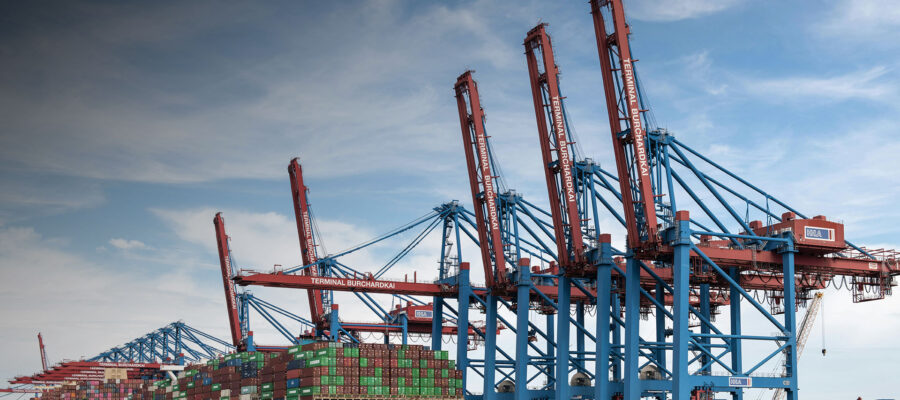This post has already been read 14733 times!
An interview with Joe Bellini on achieving executable plans despite volatility and supply disruption
This is an interview with Joe Bellini, EVP Product Marketing at One Network Enterprises, and Russell Goodman, Senior Editor at SupplyChainBrain.
Russell Goodman:
Joe, I want to talk about executable plans. But frankly, I think it’s no surprise to anybody that right now the volatility in demand supply/lead times is such that that might be a bit of a challenge. So let’s talk about that. How do you build executable plans?
Supply Chain Planning in Volatile Times
Joe Bellini
Well, if we look at where planning came from, we initially designed execution systems, as everyone knows, we have ERP, and we have transactions. And that’s how everybody does business. And one day, we said, “well, it’s not really efficient from a planning perspective. And it’s because all these transactions sit separately, you have an order, which is a purchase order, you have a sales order, you have a transport order, it’s all really the same order. But they’re all in different systems.
And we said, “This is crazy, we can’t plan this! Why don’t we create a new layer in the architecture called “planning systems.” And we said, what we can do is design it a little differently. Then we can look at all those things simultaneously, like demand, material, capacity, to solve the problem. We said, Perfect, that’s decision support.
So, we put that in planning. And then we hope for the best. We say we build the best plan, we can, and we try to execute to it. And that worked for a lot of years.
But now all of a sudden, we’ve got a lot more disruption on the execution side. And we’re saying, “Oh, you know, is there a way to solve for the problem in execution, not just in planning? Because now we’ve got this big disconnect. The other thing we did to ourselves with the plans, is we said, “We know there’s going to be some variability. So, let’s build in some insurance, some buffer, we’ll add extra inventory, we’ll put in expediting budgets, will put in premium freight budgets, we will put in extra labor. If we plan that way, we should be able to execute to the plan.”
“What we have now is the worst situation of all where the plans have all that excess investment in them, that working capital, and so forth. And we still can’t execute them, because of all the disruption.”
Joe Bellini
So everybody is asking, “Is there any way I can at least get some executable plans?”
So what we did going forward at One Network Enterprises (ONE), is we said, “Why don’t we design the execution system like we did the planning system? That way, all these moving parts are aware of each other, so that we can execute better. We can design a multi-party, multi-tiered model of our network, we can do it in real time, and we’re all using the same data. Therefore, as things begin to shift and change, we can react to it in real time, rather than have to push things into planning and hope for the best.” That hasn’t worked out very well.
The Impact of the Pandemic on Supply Chains Going Forward
Q: Well, given that the volatility has been ramped up so much, by dint of the pandemic, etc. Are you beginning to see any kind of return to pre pandemic times? Or do you see this kind of, of challenge continuing going forward for a while?
Joe Bellini
Well, I think what companies are seeing right now was an opportunity. Because due to the pandemic, they were forced to operate with lower inventories of the mix and volume they wanted to deliver to market. The downside is that we were not able to service to the level they want to. But, on the plus side, we’ve had to learn how to operate with less inventory in our networks.
So as we return to normal, and we’re not there yet, but as they look forward, and they say what should we look like in the future? They said, “Wouldn’t it be great if we could continue to operate in sort of this make to order world that we all got somewhat used to during the pandemic with limited supply? And is there a way to operate more like that permanently? That way we can have our cake and eat it too. We can actually increase our customer service levels, but also decrease the working capital required to hit those service levels along with the labor?”
And that’s why they’re beginning to look to the system we just talked about earlier, which is, is there a way to go ahead and do a real time single version of the truth with our trading partners in the network, to react to demand rather than all the excesses we had in the old planning systems that caused all the problems to begin with? So, I think there’s been give and take, upside and downside, through the pandemic.
Supply Chain Planning & Problem-Solving
Q: Let’s talk about what a planner might be juggling you’re trying to solve, let’s just say a logistics problem. And now you’ve got an order related impact on customer service that you’ve got to deal with. Walk us through what the planner has to do in such a scenario.
Joe Bellini
Yeah, that’s a great insight because what we saw is now that we have the execution environment does not In similar to what we did in planning to get all those benefits, we said with that, now when we, when we design those new planning systems, there was a new opportunity to build better production plants, demand, material, capacity, simultaneously. And we said now that we have this new capability in execution, is there a new layer of capability that can actually be offered to the marketplace. And so we call that new layer Optimized Execution. And so what it is, it’s the ability with all that excess inventory and labor and, you know, poor asset utilization, and so forth.
The New Era of Supply Chain Planning: "A real time network includes all partners, enables dynamic workflows and prescriptive sequences, so you can solve the entire problem, all the way to customer delivery." -Joe Bellini Share on XNow that we’ve got the real time, multi-tier, multi-party environment, we can actually run a dynamic workflow, so that we can look at a purchase order the same as a sales order, same as a transport order, it’s all the same order, just different roles in the network, having their perspective on that order.
When a problem does occur, whether it’s a late shipment, whether it’s a change to an order, whether it’s a factory down, the system actually offers prescriptive analytics, to the users in a workbench, and they can interact with those prescriptions and solve the problem all the way through, because those are all interconnected.
So it might have started with, let’s say, an ETA, estimated time of arrival issue. But the system will actually look forward and say, well, there’s that cause and impact to an order. And maybe we should do something about the order, you know, maybe a last-minute allocation, maybe a split order, but you have all those options available to you now that you’ve never had before. Before, you couldn’t get into the execution systems that way. So you had to hope for the best in planning, and then hope you could execute it. Now, you can actually execute dynamically, and resolve all those problems all the way through to the customer delivery. So, this new Optimized Execution layer opens up a whole new world.
AI-Based Prescriptive Analytics
Q: This network approach is clearly something that I know you’re excited about, you feel that it is going to enable folks who are in planning, but I want to drill down into the AI based prescriptive analytics. Let’s just talk about that. Let’s talk about the role that plays what would you say?
Joe Bellini
Yeah, that was an inspiration. For those listening that know about the game chess, the grand masters understand patterns, they can look at the board at any time, and understand what pattern of moves would win the game. So, as we created this new layer, this Optimized Execution layer, we said, well, there’s always going to be certain types of problems that seem to repeat whether it’s related to orders or logistics or assets. And we said, there’s going to be certain decision pathways that get made that lead to better results than other decision pathways. And it’s all bottom-up, data-driven.
Supply Chain Planning & Execution: "The new AI/ML driven prescriptions are not the old trial and error method, it's data-driven, dynamic and sequenced." -Joe Bellini Share on XIt’s not the old trial and error method, looking at scenarios and sales and operations planning. That was okay for the day, and we made scenarios and we deploy them. But it was never optimal.
With the new prescriptive analytics, it’s data-driven, it’s coming bottom up. And we said now that we’ve got optimal prescriptions, as we sequence them together to get a better result, better customer service levels, least landed cost, can the system remember what those decisions sequences were those patterns, and then reuse them in the future offer them again, to new planners when they encounter the same problems?
So the system brings huge advancements around machine learning and pattern recognition to help planners.
Benefits to Customers of One Network’s Digital Supply Chain Network™
Q: Joe, final question, let me put on my potential customer hat and ask you this. I want to know precisely what it is that One Network does. I want to know what you’re going to do for my enterprise. Walk me through that what would you say.
Joe Bellini
At One Network, we have the capability to solve for demand, supply, and logistics variability into today’s newer technology capability. So where companies have struggled, as we said, with using more working capital, having higher labor issues, you know, increases in premium freight, poor customer service levels at the shelf.
What we’ve been able to do across industries at One Network, whether it’s food, high tech, or aerospace, apparel, health care, pharmaceutical, we’ve got large deployments in each area, even on the military side, is we’ve actually been able to come in and resolve for those problems.
We put these organizations and industries onto real time networks. We’ve eliminated all the system and information lead times, so they can make those decisions. And therefore I think when you think about what might be the Holy Grail, which is how do you achieve the highest customer service levels at the least landed cost? regardless of what industry you’re in? Whether you’re more demand-driven like food, or maybe more planning oriented, like automotive and industrial, is there a way to get onto a network and resolve for those types of issues? Better working capital, better customer service, that’s what we’re doing at One Network.
Q: Well, a compelling argument that you make there, Joe, I know you’re busy here, but you found time to speak with us. Thank you so very much.
You might also like…
- 8 Actionable Supply Chain Trends for 2023 - January 19, 2023
- Constraint-Based Supply Planning & Execution - November 21, 2022
- Supply Chain Planning Control Tower - September 29, 2022






One comment
Comments are closed.